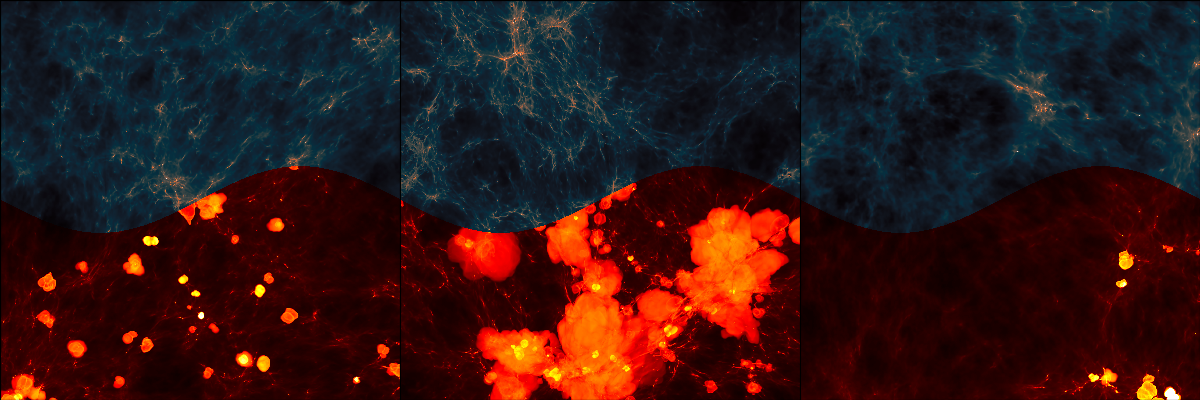Renaissance Simulations Laboratory
Explore the first galaxies through physics-based modeling, simulation, and data exploration
The Renaissance Simulation Laboratory

Welcome to the Renaissance Simulation Laboratory!
The Renaissance Simulations are a series of highly sophisticated computer simulations of galaxy formation in the early Universe. These simulations were run on the Blue Waters supercomputer at the National Center for Supercomputing Applications and produced more than 70 TB of raw data and other data products, such as halo catalogs, merger trees, and mock observations. The Renaissance Simulation Laboratory (RSL) provides open access to all of this data, through both direct download and live analysis using Jupyter notebooks.
Here’s what you’ll find at the RSL:
-
Learn: If you’re new to galaxy formation and computational astrophysics, the Learn section covers the basics of these topics.
-
Investigate: Go here for access to the Renaissance Simulation data and to begin your analysis.
-
Showcase: See a gallery of images, movies, and papers created with Renaissance Simulation data.
-
User Guide: Here you’ll find more information on how to access and analyze Renaissance Simulation data.
About the Renaissance Simulations
The Renaissance Simulations simulate high redshift galaxy formation in three zoom-in regions within a single comoving volume 40 Mpc on a side: a high density region “Rarepeak”, a region of average density “Normal”, and a low density region “Void”. The image to the right illustrates this. Multiple simulations of each region were carried out varying the treament of the Lyman-Werner UV radiation which influences the molecular hydrogen chemistry and cooling in primordial minihalos. Technical details of the simulations can be found here.
Acknowledgements
All simulations were performed with the publicly available Enzo code on the Blue Waters supercomputer over a 3-year period (2013-2015) with the support of a PRAC allocation, NSF award OCI-0832662. The RSL is supported by a NSF CDS&E grant AST-1615848.